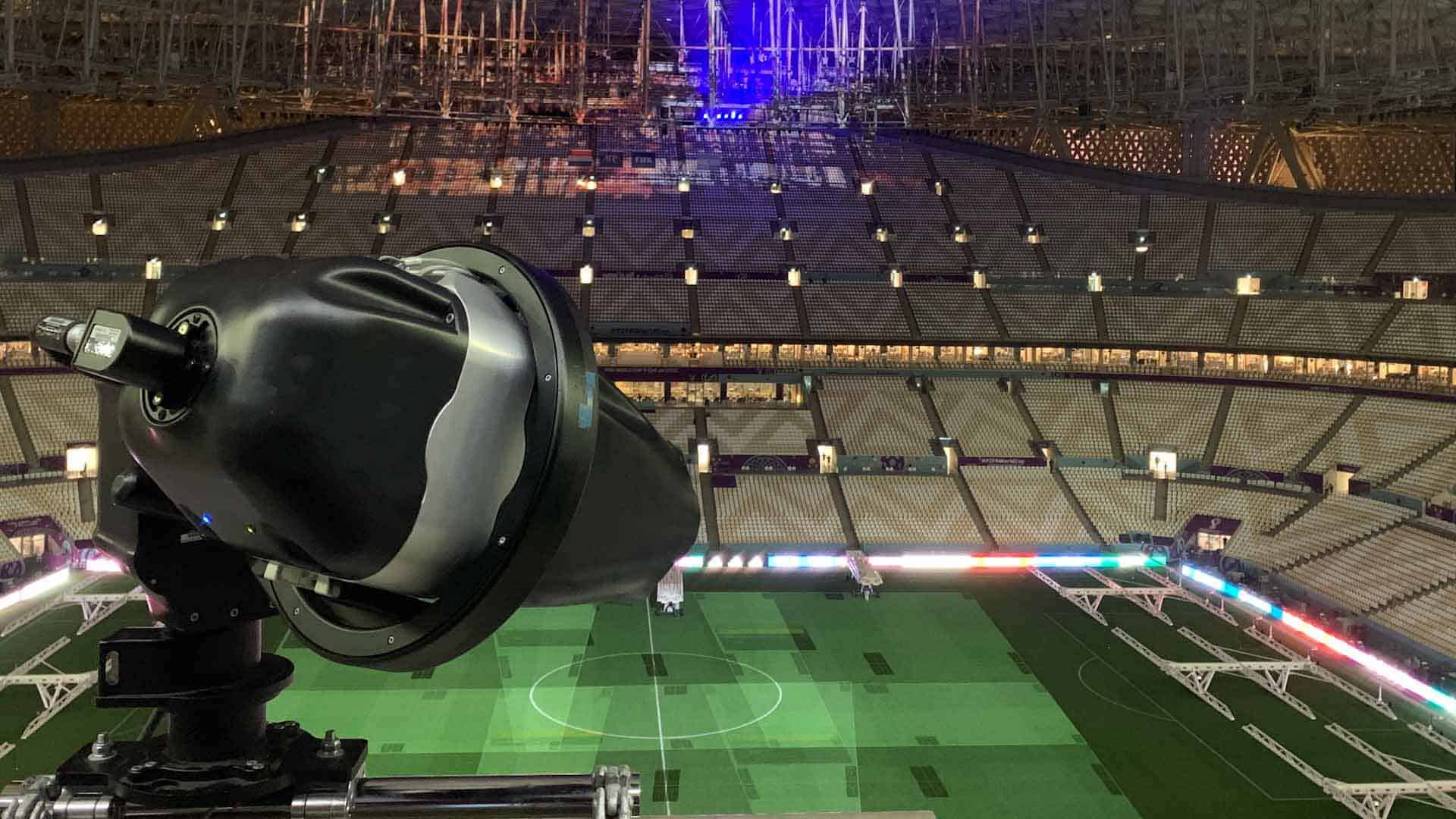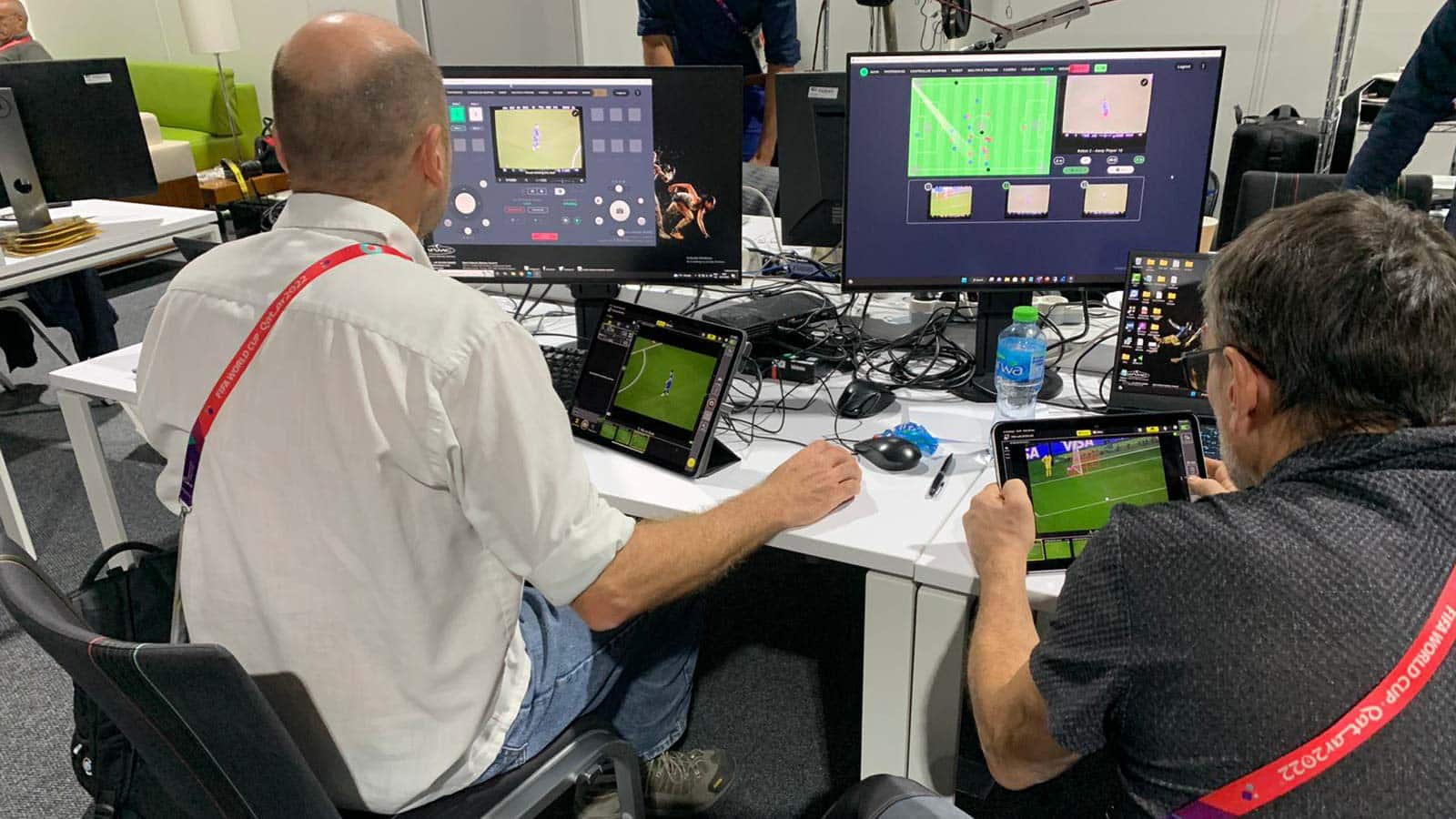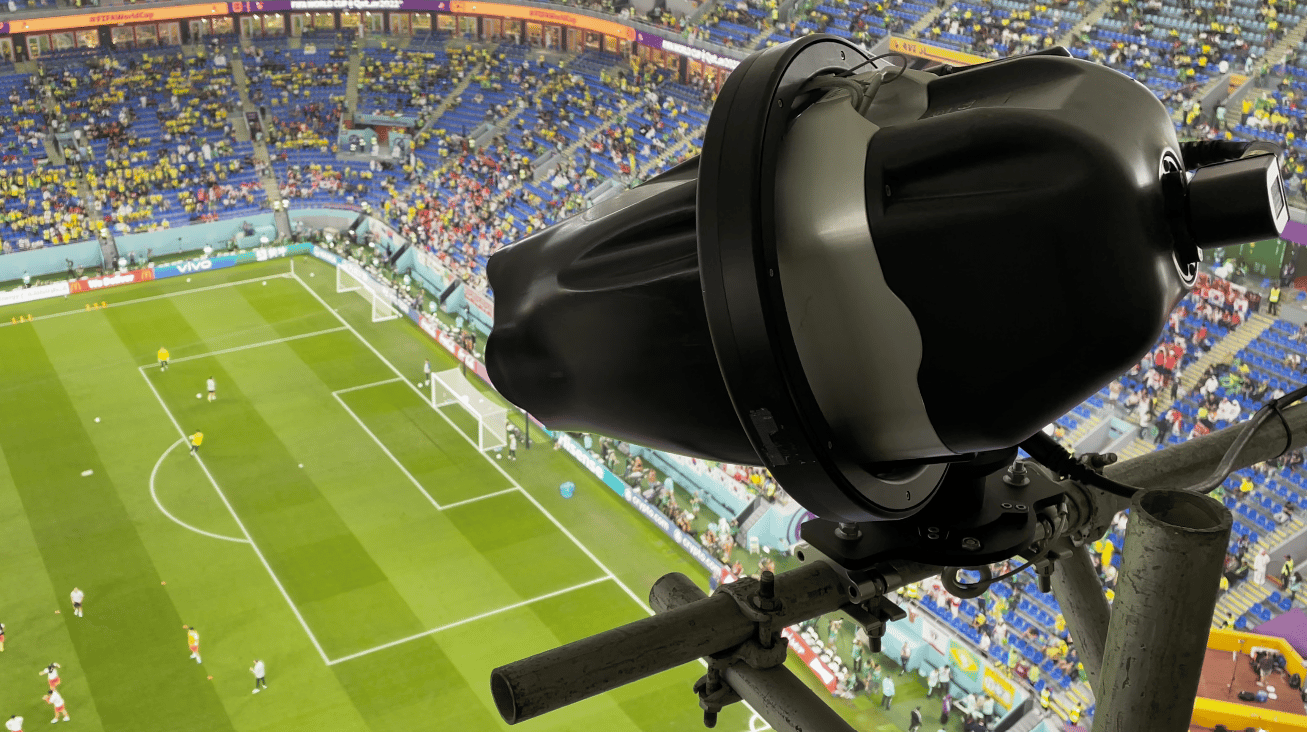World Class Technology on a World Stage
How MRMC's Robotic POD & Nikon Z9 Camera is Used To Capture World Class Football Stars
Capturing new angles of the world's greatest footballers
On one of the biggest stages in the world, MRMC yet again showcased their versatility and state-of-the-art technology. In collaboration with AFP (Agence France Presse), the versatile Robotic POD housed the Nikon Z9 camera to capture images of the most famous football players in the world.

Robotic POD & Nikon Z9
Featuring the new Z100-400 lens
The Robotic POD had been adapted to use Nikon’s flagship mirrorless camera, the Z9 and the newest Z100-400 lens. What differs from previous deployments of this robotic POD however is not in the camera that was used but in the software that operates the robotic POD. Up to five independent PODs were installed in the stadiums. Each POD is then calibrated to the pitch using the corner points, the centre of the pitch and the two behind-the-goal positions. Using complicated maths and trigonometry, the POD is then capable of judging its exact position in the stadium. A simple user interface on the MHC (Multi-head controller) software then virtually displays the position of the cameras and their exact field of view, the cameras are also numbered to identify them for later assignment
The Robotic POD had been adapted to use Nikon’s flagship mirrorless camera, the Z9 and the newest Z100-400 lens. What differs from previous deployments of this robotic POD however is not in the camera that was used but in the software that operates the robotic POD. Up to five independent PODs were installed in the stadiums. Each POD is then calibrated to the pitch using the corner points, the centre of the pitch and the two behind-the-goal positions. Using complicated maths and trigonometry, the POD is then capable of judging its exact position in the stadium. A simple user interface on the MHC (Multi-head controller) software then virtually displays the position of the cameras and their exact field of view, the cameras are also numbered to identify them for later assignment

Polymotion Player enters the Game
Track>Follow>Capture
Polymotion Player is an MRMC software solution that fully automates the movement of robotic cameras. Real-time player tracking data is fed into the Polymotion software which is instantly translated using the algorithms into commands to precisely move the camera where the player is positioned. Polymotion Player has been in the making for several years now at MRMC and has been used in many stadiums around the world providing broadcast-level video footage. In the last year, the software was further refined to be used in photography applications as well.
Polymotion Player is an MRMC software solution that fully automates the movement of robotic cameras. Real-time player tracking data is fed into the Polymotion software which is instantly translated using the algorithms into commands to precisely move the camera where the player is positioned. Polymotion Player has been in the making for several years now at MRMC and has been used in many stadiums around the world providing broadcast-level video footage. In the last year, the software was further refined to be used in photography applications as well.
Whether in video or in stills, the ability to follow a single player throughout a whole game is not something that any manned photographer is physically capable of doing for 90 mins straight. As it sometimes is, in sports photography, that the most unexpected or overlooked incident, if captured, can become the highlight of the whole event. One photo, one clip, can be as valuable as all the photos taken put together, which is why using the Robotic POD gives us the best opportunity to capture those moments.
MRMC

Identifying the Players Using Positional Data
Using the Spotter Screen
Next, comes the important player data. The exact player position and jersey number is also displayed on the same screen which is called the ‘Spotter Screen’. Blue and red dots represent the players on the pitch from each team, and as they move around the pitch the dots move as well. Finally, all the operator needs to do is select a number and the robots jump into action. In an instant the cameras lock on to the target and follow them throughout the rest of the game, keeping them centred, whether walking or running after the ball. To add to the mix, the ball can also be tracked, and with a top speed of 180°/s the robot has no problem keeping up with the ball.
Next, comes the important player data. The exact player position and jersey number is also displayed on the same screen which is called the ‘Spotter Screen’. Blue and red dots represent the players on the pitch from each team, and as they move around the pitch the dots move as well. Finally, all the operator needs to do is select a number and the robots jump into action. In an instant the cameras lock on to the target and follow them throughout the rest of the game, keeping them centred, whether walking or running after the ball. To add to the mix, the ball can also be tracked, and with a top speed of 180°/s the robot has no problem keeping up with the ball.
Allowing Operators to Be More Creative
All that’s left for the operator to do now is trigger the cameras – separately, or in sync – whenever the action unfolds. This technology has opened the doors for new types of photos to be taken. While the manned cameras are focusing solely on the action, you ask yourself what are the other players doing? What are their reactions and expressions when there is a goal or a foul? From different angles what does the action look like? For example, if there is a foul in question, or a ball suspected to be out, but a player is obscuring the view, what do the other 4 angles tracking the same player suggest? You now have almost a 3D view of the action all throughout the game.
